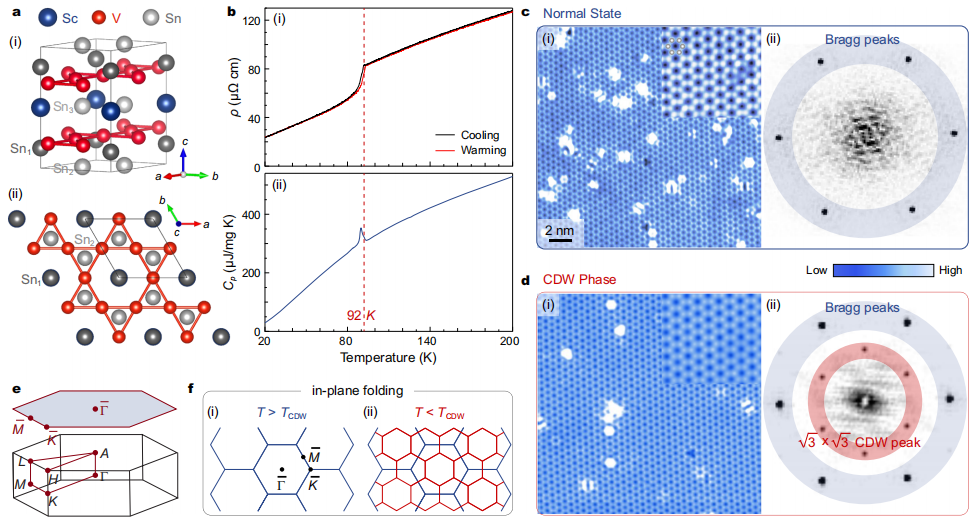Recently, Dr. Li Yinxiang from College of Science, USST published a paper titled “Phonon promoted charge density wave in topological kagome metal ScV6Sn6” in Nature Communications as a co-first author. Dr. Hu Yong from Paul Scherrer Institute, Switzerland, Prof. Ma Junzhang, City University of Hongkong, and Prof. Li Yinxiang were all the first authors. Dr. Hu Yong, and Shi Ming, a research fellow from , and Wu Xianxin, associate fellow from Institute of Theoretical Physics, Chinese Academy of Sciences were the corresponding authors.
The discovery of ScV6Sn6, a bilayer kagome metal featuring an intriguing CDW order, offers a novel platform to explore the underlying mechanism behind the unconventional CDW. Here, the research team combine high-resolution angle-resolved photoemission spectroscopy, Raman scattering and density functional theory to investigate the electronic structure and phononmodes of ScV6Sn6. They identify topologically nontrivial surface states and multiple van Hove singularities (VHSs) in the vicinity of the Fermi level, withone VHS aligning with the in-plane component of the CDW vector near the K-point.
Researchers have found in their study that the VHS near point K is similar to the in-plane charge density wave vector, indicating that electron correlation is related to the charge density wave. Raman scattering measurements show that ScV6Sn6 exhibits different phonon modes, with strong electron phonon coupling in the material. Therefore, in the topological cage structure metal ScV6Sn6, the origin of charge density waves is closely related to electron phonon coupling and correlation effects. This study reveals that lattice degrees of freedom play a crucial role in the charge density wave of ScV6Sn6, which helps to gain a deeper understanding of various quantum phenomena in vanadium-based metal materials. This study will have a positive influence on fields such as materials science, information science and technology, and topological quantum computing.

Related:https://www.nature.com/articles/s41467-024-45859-y


